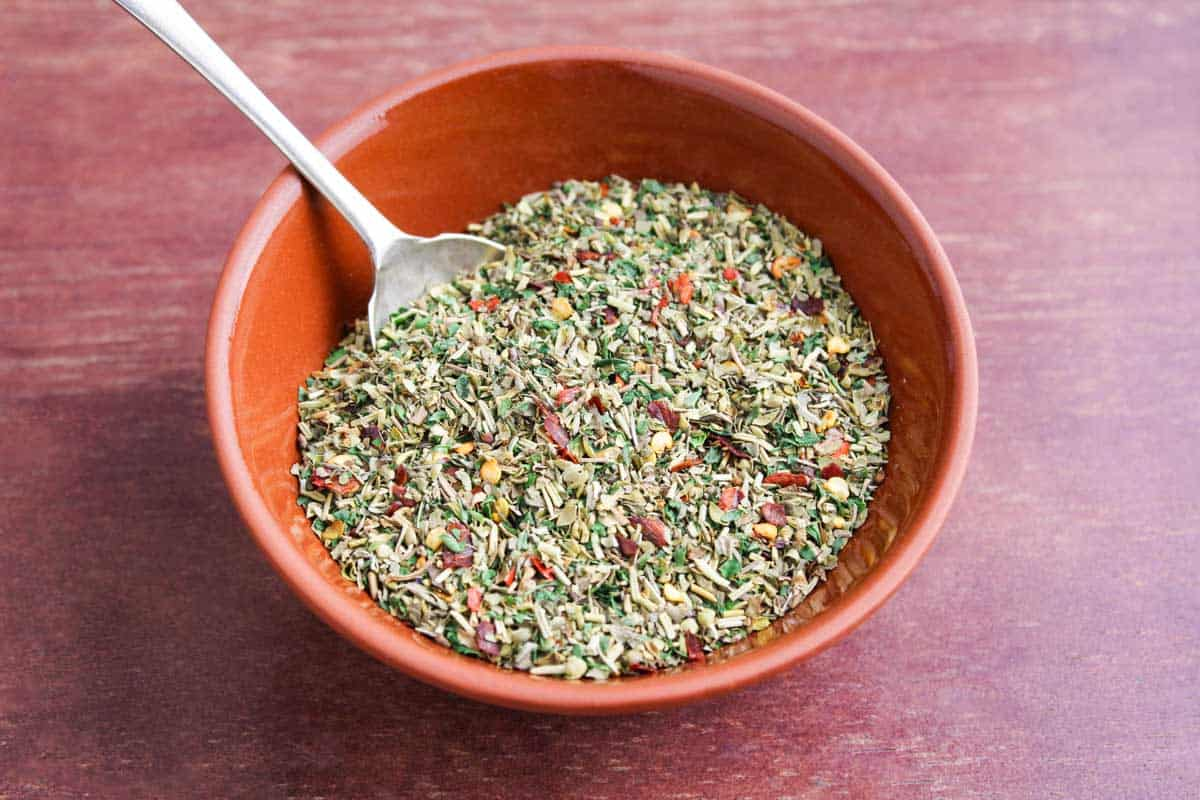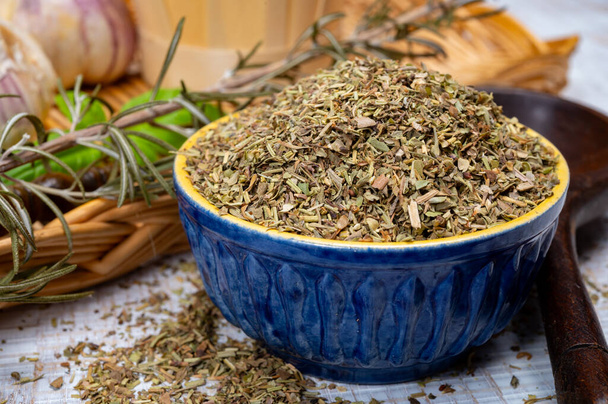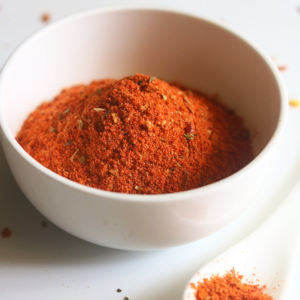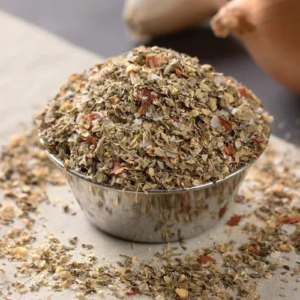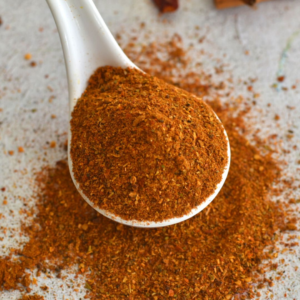Description
Common Ingredients in Mixed Herbs:
While the exact blend can vary, a typical mixed herb blend often contains the following herbs:
- Oregano: One of the most prominent herbs in mixed herb blends, oregano has a robust, slightly bitter flavor with hints of pepper and a slight floral note. It is widely used in Mediterranean and Italian dishes.
- Thyme: With its earthy, lemony flavor, thyme adds a subtle depth to the mix, enhancing savory dishes like soups, stews, and roasted meats.
- Basil: Known for its aromatic, sweet, and slightly peppery flavor, basil brings a touch of freshness to the herb blend, especially in Italian cuisine.
- Marjoram: Closely related to oregano, marjoram has a sweeter, milder flavor with notes of citrus and pine. It adds a delicate, fragrant quality to the mix.
- Rosemary: With its strong, woody, and slightly piney flavor, rosemary brings a more pronounced earthy flavor to the mix, which works well with meats and roasted vegetables.
- Sage: Sage has a savory, slightly peppery flavor with a hint of pine. It is often included in mixed herb blends to add a warm, slightly earthy element.
- Bay Leaves: While bay leaves are often used whole in cooking, they are sometimes ground into a mix. Bay adds a subtle, aromatic bitterness that enhances slow-cooked dishes.
- Parsley: Parsley is mild and fresh, with a grassy, slightly peppery flavor. It adds brightness to the herb mix and balances out stronger flavors like rosemary and thyme.
Flavor Profile:
Mixed herbs are characterized by:
- Earthy: Many of the herbs, such as thyme, rosemary, and sage, contribute deep, earthy flavors that are grounding and comforting.
- Aromatic: The mix generally has a fragrant aroma, with basil, oregano, and marjoram adding floral and slightly citrusy notes.
- Herbal and Savory: The overall taste is a balanced combination of savory, herbal, and slightly bitter flavors, making the blend suitable for a wide range of dishes.
- Mildly Sweet and Peppery: Some herbs like marjoram, basil, and parsley bring a mild sweetness, while others like oregano and thyme add a bit of peppery heat.
Common Uses:
Mixed herbs are incredibly versatile and can be used in numerous ways:
- Soups and Stews: A common use for mixed herbs is to season soups, stews, and broths. The combination of earthy and aromatic flavors is perfect for slow-cooked dishes like vegetable soups, chicken stews, or beef bourguignon.
- Sauces: Mixed herbs are often used in tomato-based sauces for pasta dishes, pizza, and lasagna. It enhances the flavor of the sauce without overpowering the other ingredients.
- Marinades: The herb blend can be used to create marinades for meats, fish, or vegetables. Mixed herbs pair particularly well with olive oil, garlic, lemon, and balsamic vinegar.
- Roasted Vegetables: Mixed herbs are excellent for seasoning roasted vegetables such as potatoes, carrots, zucchini, and bell peppers. The herbs add flavor to the vegetables as they caramelize in the oven.
- Grilled Meats: Use mixed herbs to season meats like chicken, pork, lamb, or beef. The mix complements the savory flavors of grilled meats, adding depth and freshness.
- Bread and Savory Baked Goods: Mixed herbs can be sprinkled on top of bread dough before baking or mixed into the dough itself to create flavorful, herb-infused bread or savory scones.
- Salads and Dressings: A small amount of mixed herbs can be added to salad dressings, adding a herby flavor without overwhelming the salad’s freshness.
Regional Influence:
Mixed herbs are most often associated with Mediterranean and Italian cuisines. They are a cornerstone in Mediterranean cooking, where fresh herbs like basil, oregano, and rosemary are commonly used. In Italian cuisine, a blend of mixed herbs is often used in pasta sauces, pizza, and meat dishes. While the specific herbs included may vary slightly, many Western European and Middle Eastern cuisines also utilize similar herb blends, though regional differences in proportions and specific herb choices exist.
Health Benefits (Claimed):
Many of the herbs in a mixed herb blend offer potential health benefits, though they are typically consumed in small amounts and should not be considered a sole source of nutrition:
- Antioxidants: Herbs like thyme, rosemary, and basil are rich in antioxidants, which can help combat oxidative stress in the body.
- Digestive Aid: Some herbs like thyme and sage have been traditionally used to aid in digestion, reduce bloating, and soothe digestive discomfort.
- Anti-inflammatory: Rosemary and oregano have anti-inflammatory properties that may help reduce inflammation in the body when consumed regularly in small amounts.
- Rich in Vitamins and Minerals: Many herbs, such as parsley and basil, provide small amounts of vitamins like vitamin C, vitamin A, and folate, which contribute to overall health.
Differences from Fresh Herbs:
- Convenience: Mixed herbs in dried form are convenient and have a longer shelf life than fresh herbs, making them a go-to choice for many home cooks.
- Flavor Intensity: Dried herbs are typically more concentrated in flavor than fresh herbs, so they require less quantity. However, dried herbs may lose some of the bright, fresh notes that fresh herbs provide.
- Texture: Dried mixed herbs have a more crumbly texture compared to fresh herbs, which tend to have a crisp, vibrant texture.
Conclusion:
Mixed herbs are a classic and essential seasoning blend, offering a convenient way to bring depth, warmth, and complexity to a wide variety of dishes. Whether you’re cooking Mediterranean-inspired dishes, Italian pasta sauces, or roasted meats and vegetables, mixed herbs provide the perfect balance of earthy, savory, and aromatic flavors. This versatile blend is a must-have in any spice rack, and with its long shelf life, it’s ready to elevate your cooking whenever you need it!


